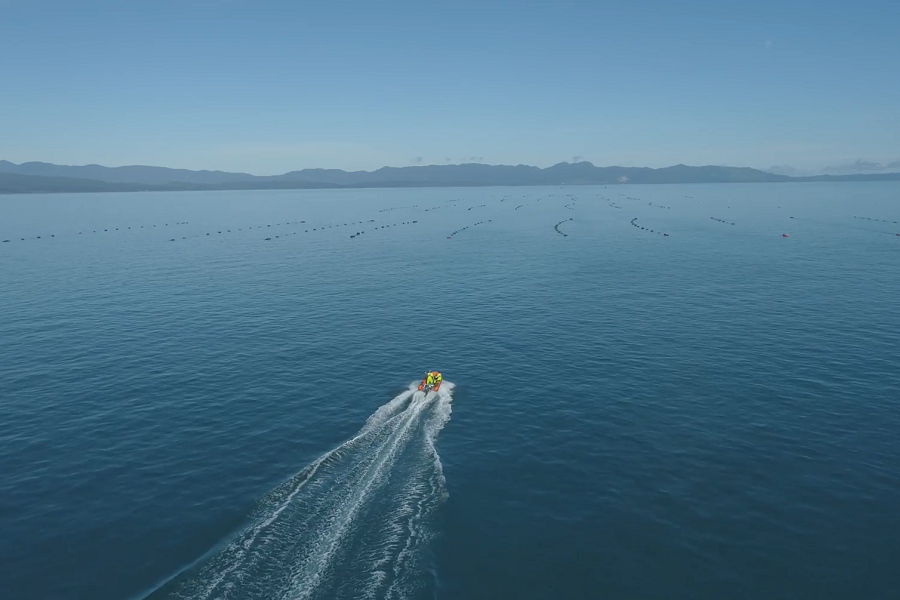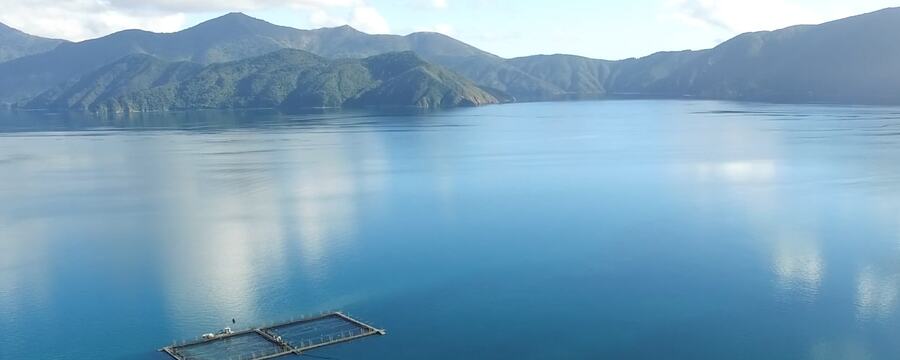Aquaculture

Share this step
Aquaculture – Definition
Aquaculture, also known as aquafarming or mariculture, is the farming of fish, crustaceans, molluscs, aquatic plants, algae, and other aquatic organisms. It is the fastest-growing food industry in the world.
Aquaculture – Opportunities
Aquaculture can contribute towards the following global goals:
- SDG 1 – No poverty: Aquaculture can contribute to this goal by providing jobs in coastal and rural communities.
- SDG 2 – Zero hunger: As global demand for protein increases, aquaculture is playing a growing role in feeding the growing population, providing food security
- SDG 3 – Promoting health and wellbeing: Consumption of fish and shellfish is associated with many health benefits.
- SDG 12 – Responsible consumption and production: It takes less feed to produce a kilogram of salmon than it does to produce a kilogram of meat of animals raised in terrestrial agriculture.
- SDG 13 – Climate Change: Through water sequestration (the natural carbon capture by water and aquatic plants) aquaculture can contribute to reducing the amount of carbon dioxide in the atmosphere. As fish farms can be set up close to urban areas, it shortens travel distance, reducing CO2 emissions.
- SDG 14 – Life below water: Developments in sustainable aquaculture technology using closed systems are enabling land-based production of seafood that eases the pressure on wild fish populations and ecosystems.
Aquaculture – Global context
Aquaculture is the world’s fastest growing food industry, it accounts for half of the total global seafood supply, with the other 50% coming from wild-caught fish. East Asia and the Pacific has been leading global growth in aquaculture production, most particularly China.
For more information about aquaculture in your part of the world:
- Website: ‘Our World in Data’: Aquaculture production, 2018
- YouTube video: FAO State of World Fisheries and Aquaculture 2020: Sustainability in Action – Food and Agriculture Organization of the United Nations
Its important to recognise that the rapid growth of this industry has not been without issues around sustainability and environmental impact. There are a number of aquaculture operations around the world that promote production and financial gain above all else and this has come at a cost to the environment and often a cost to the aquaculture operation itself.
Examples can include the destruction of mangroves to farm shrimp in SE Asia and central America. The issues with waste discharge from aquaculture sites has also been of concern. There are issues with things like sea lice in farming salmon which sometimes are treated in questionable ways. Many operations have also traditionally relied on the use of antibiotics to help produce larger stocking densities whilst controlling disease outbreaks. The issue of fishing to provide fish for fishmeal (which traditionally has been a key part of diets of aquacultured fish and shrimp) has also thrown doubt on the potential sustainability of the industry.
Part of the global conundrum is to provide enough food for an ever increasing world wide population whilst minimising the impact to the environment. All farming practices have an impact on the environment but as industries grow its important to manage these impacts as best as possible. As aquaculture is a relatively new global food producing industry there is a real opportunity to make a mark on its current and future development. With this in mind we see amazing advances in sustainable developments that are changing the face of the industry.
Examples include:
- YouTube video: Researchers Successfully Replace Fishmeal, Fish Oil in Farm-Raised Kampachi – Ocean Era
- YouTube video: This innovative fish farm could revolutionise seafood production – World Economic Forum
There are many countries around the world that are making amazing progress in this area. The world is also becoming more concerned around where their food comes from and the impact of the production of that farm. So there is always motivation to do better. New Zealand is at the forefront of sustainable aquaculture. With heavy environmental legislation, nearly non existent use of anti biotics, no sea lice, and sustainable feed technologies in place it is leading the way in environmental standards around aquaculture.
Aquaculture – New Zealand context
The commercial aquaculture industry in New Zealand has grown significantly since the first oyster and mussel farms were started in 1970s, with production growing by 10% per annum. Over the last fifty years new species have been farmed, most notably salmon which started in the 1980s. Currently these three species represent most of the revenue ($0.5 billion) generated by marine aquaculture in New Zealand, Mussels (62%), Salmon (32%) and Oysters (6%). Most of aquaculture is located off the northern coasts of the South Island (65% of mussels and 63% of salmon), Coromandel (25% of mussels and 24% of oysters) and the top of the North Island (75% of Oysters and 4% of mussels).
For more information, see:
- Website: A+ Aquaculture: Sustainability and world leading aspects of NZ Aquaculture
- YouTube channel: NZ Aquaculture
- YouTube video: Aquaculture and the environment – Global Seafood Alliance
- YouTube video: The Business Case for Responsible Aquaculture, WWF
Aquaculture – Careers
Aquaculture has an incredibly diverse and ever-increasing range of career opportunities, the broad scope of activities require a wide range of knowledge and skills. The rapid global growth of the sector has seen an equal growth in jobs and demand for talent make it an attractive place to find meaningful work.
There are opportunities from entry level labour work, through to advanced specialized roles in a wide variety of fields, including: biology, ecology, engineering, and management. New Zealand’s Aquaculture Strategy aims to double the number of aquaculture jobs from 3,000 to at least 6,000 by 2035. There are roles in aquaculture across the entire supply chain. Visit the Aquaculture section of the Opportunity Grows Here website to get an overview of the opportunities in the sector.
Aquaculture – NZ Case Studies
Below is a list of links to video interviews with people who work in aquaculture to help expand your view of this topic. You do NOT need to watch them all, however, we recommend you select 3 or more of the topics that interest you, and use the provided links (or your own internet search) to investigate further:
- YouTube video: Archie Amadoru – Fish Health & Water Quality Technician
Archie is from Sri Lanka and is a graduate of Nelson Marlborough Institute of Technology (NMIT). He now works as a Fish Health & Water Quality Technician. - YouTube video: Blue Endeavour – Open ocean salmon farm proposal
In this video experts discuss the research and planning to develop New Zealand’s first open ocean salmon farm, 7km away from land. - YouTube video: Jordan Reed, Smolt Farm Technician
Jordan is from the USA. He studied software engineering and now works as a Smoult Salmon Farm Technician. - YouTube video: Big Glory Bay Farm Tour
This video features members of the team at Big Glory Bay salmon farm, they tell the aquaculture story from hatchery to plate. - YouTube video: Mussel Spat to Powder
Anna Kleinmans studied marine science. She explains the process of how Greenshell mussels are developed from spat to powder.
Share this
Blue Tomorrow: Understanding the Blue Economy

Blue Tomorrow: Understanding the Blue Economy


Reach your personal and professional goals
Unlock access to hundreds of expert online courses and degrees from top universities and educators to gain accredited qualifications and professional CV-building certificates.
Join over 18 million learners to launch, switch or build upon your career, all at your own pace, across a wide range of topic areas.
Register to receive updates
-
Create an account to receive our newsletter, course recommendations and promotions.
Register for free







